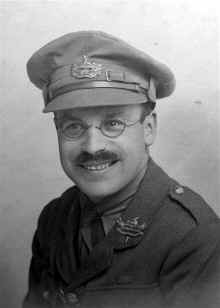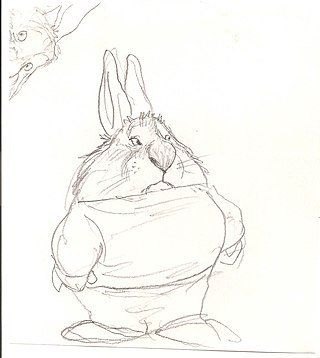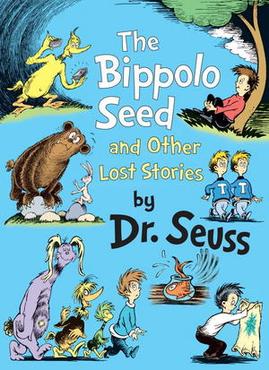
Theodor Seuss Geisel was an American children's author and cartoonist. He is known for his work writing and illustrating more than 60 books under the pen name Dr. Seuss. His work includes many of the most popular children's books of all time, selling over 600 million copies and being translated into more than 20 languages by the time of his death.

Alice's Adventures in Wonderland is an 1865 English novel by Lewis Carroll, a mathematics professor at Oxford University. It details the story of a young girl named Alice who falls through a rabbit hole into a fantasy world of anthropomorphic creatures. It is seen as an example of the literary nonsense genre. The artist John Tenniel provided 42 wood-engraved illustrations for the book.

Joseph Hilaire Pierre René Belloc was a Franco-English writer and historian of the early twentieth century. Belloc was also an orator, poet, sailor, satirist, writer of letters, soldier, and political activist. His Catholic faith had a strong effect on his works.

Frederick William Harvey DCM, often known as Will Harvey, was an English poet, broadcaster and solicitor. His poetry became widely popular during and after World War I.

Joseph Pearce, is an English-born American writer, and as of 2014 Director of the Center for Faith and Culture at Aquinas College in Nashville, Tennessee, before which he held positions at Thomas More College of Liberal Arts in Merrimack, New Hampshire, Ave Maria College in Ypsilanti, Michigan and Ave Maria University in Ave Maria, Florida.

And to Think That I Saw It on Mulberry Street is Theodor Seuss Geisel's first children's book published under the pen name Dr. Seuss. First published by Vanguard Press in 1937, the story follows a boy named Marco, who describes a parade of imaginary people and vehicles traveling along a road, Mulberry Street, in an elaborate fantasy story he dreams up to tell his father at the end of his walk. However, when he arrives home, he decides instead to tell his father what he actually saw—a simple horse and wagon.

If I Ran the Zoo is a children's book written by Dr. Seuss in 1950.

Children's poetry is poetry written for, appropriate for, or enjoyed by children.

The King's Stilts is a children's book written and illustrated by Theodor Geisel, under the pen name Dr. Seuss, and first published in 1939 by Random House. Unlike many Dr. Seuss books, it is narrated in prose rather than verse.
G.K.'s Weekly was a British publication founded in 1925 by writer G. K. Chesterton, continuing until his death in 1936. Its articles typically discussed topical cultural, political, and socio-economic issues yet the publication also ran poems, cartoons, and other such material that piqued Chesterton's interest. It contained much of his journalistic work done in the latter part of his life, and extracts from it were published as the book The Outline of Sanity. Precursor publications existed by the names of The Eye-Witness and The New Witness, the former being a weekly newspaper started by Hilaire Belloc in 1911, the latter Belloc took over from Cecil Chesterton, Gilbert's brother, who died in World War I: and a revamped version of G. K.'s Weekly continued some years after Chesterton's death by the name of The Weekly Review.
"Matilda Mother" is a song by British band Pink Floyd, featured on their 1967 debut album, The Piper at the Gates of Dawn. Written by Syd Barrett, it is sung mostly by Richard Wright with Barrett joining in on choruses and singing the whole last verse. It was the first song recorded for the album.
Nationality words link to articles with information on the nation's poetry or literature.

Wallace Whitney Tripp was an American illustrator, anthologist and author. He was known for creating anthropomorphic animal characters of emotional complexity and for his great visual and verbal humor. He was one of several illustrators of the Amelia Bedelia series of children's stories. He has illustrated over 40 books, including Marguerite, Go Wash Your Feet (1985), Wallace Tripp's Wurst Seller (1981), Casey at the Bat (1978) and A Great Big Ugly Man Came Up and Tied His Horse to Me (1973). Tripp also drew many greeting cards for the Pawprints line.

How the Grinch Stole Christmas! is a Christmas children's story by Theodor "Dr. Seuss" Geisel written in rhymed verse with illustrations by the author. It follows the Grinch, a grouchy, solitary creature who attempts to thwart the public's Christmas plans by stealing Christmas gifts and decorations from the homes of the nearby town of Whoville on Christmas Eve. Miraculously, the Grinch realizes that Christmas is not all about money and presents.

The Bippolo Seed and Other Lost Stories is a collection of seven illustrated stories by children's author Dr. Seuss published by Random House on September 27, 2011. Though they were originally published in magazines in the early 1950s, they had never been published in book form and are quite rare, described by the publisher as "the literary equivalent of buried treasure". The stories were discovered by Charles D. Cohen, a Massachusetts dentist and a Seuss scholar and biographer, who also wrote an introduction to the collection.

Cautionary Tales for Children: Designed for the Admonition of Children between the ages of eight and fourteen years is a 1907 children's book written by Hilaire Belloc. It is a parody of the cautionary tales that were popular in the 19th century. The work is in the public domain in the United States.

Lord Ian Basil Gawaine Hamilton-Temple-Blackwood, known as Lord Basil Temple Blackwood, was a British lawyer, civil servant and book illustrator.

The Four Men: A Farrago is a 1911 novel by Hilaire Belloc that describes a 140-kilometre (90 mi) long journey on foot across the English county of Sussex from Robertsbridge in the east to Harting in the west. As a "secular pilgrimage" through Sussex, the book has parallels with his earlier work, the religious pilgrimage of The Path to Rome (1902). "The Four Men" describes four characters, Myself, Grizzlebeard, the Poet and the Sailor, each aspects of Belloc's personality, as they journey in a half-real, half-fictional allegory of life. Subtitled "a Farrago", meaning a 'confused mixture', the book contains a range of anecdotes, songs, reflections and miscellany. The book is also Belloc's homage to "this Eden which is Sussex still" and conveys Belloc's "love for the soil of his native land" of Sussex.
John Douglas Woodruff (1897–1978) was the editor of the Tablet and later chairman of the Catholic publishers Burns & Oates.















